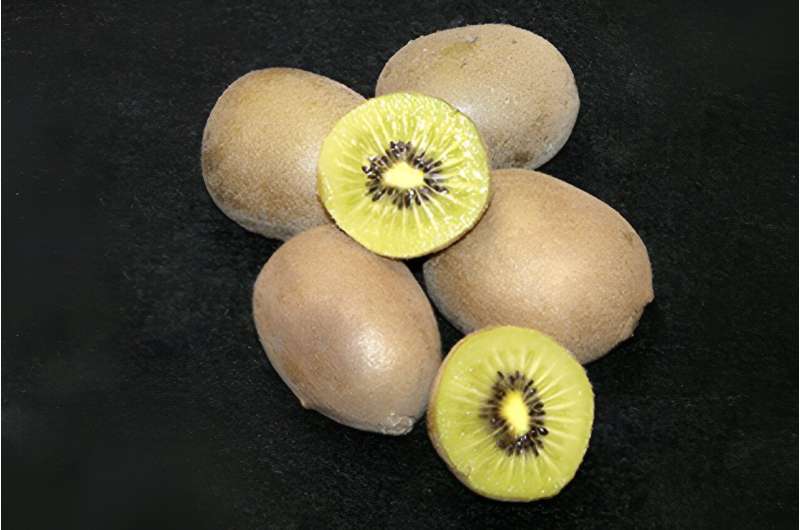This article has been reviewed according to Science X's editorial process and policies. Editors have highlighted the following attributes while ensuring the content's credibility:
fact-checked
trusted source
proofread
Research team develops cold-hardiness kiwi fruit for immediate release to public

Kiwi fruits with their tangy green flesh are routinely purchased and devoured throughout the year by people across the nation. This is no surprise. Kiwi fruit is high in vitamin C, dietary fiber, and potassium. The subtropical fruit is also a favorite of many southern U.S. producers since the delicious fruit is traditionally grown in warmer climates. California produces the vast majority of kiwi fruits that are sold in our local grocery stores, but due to recent research advancements from U.S. Department of Agriculture scientists, this may no longer be the case.
This was not a snap decision. The research actually began in 1995 when scientists from the Agricultural Research Service's Appalachian Fruit Research Service (AFRS) planted second-generation seedlings that originated in Rome, Italy. Only two vines survived the cold winter temperatures between 1995 and 2015, with a record low temperature during that period of -5.8 F. Of those two vines, "Tango" (female) and "Hombre" (male) were planted and evaluated in the AFRS orchards before a new crop proved that these particular cultivars could grow and thrive in traditional Mid-Atlantic and Northeastern winter climates.
In a recently published study, researchers noted that both vines grew vigorously, and received little pruning before bearing fruit. There was also no need for supplemental irrigation, fertilizer, pesticides, or a warm climate for growth. The findings are published in the journal HortScience.
"This cultivar isn't currently found in the grocery store," said Research Biologist Scientist Chris Dardick. "The flesh and texture are very similar to the kiwi fruit that people already enjoy and so is the flavor. It's easy to grow, extremely pest and disease resistant, and readily available for use by producers and nurseries in colder climate conditions."
Tango's fruit yields high quality in terms of size and soluble solids and are comparable to the commercial A. deliciosa cultivar Hayward. It can also remain in cold storage for extended periods of time.
The male pollinizer "Hombre" is not patented and can be publicly made available upon request. The female kiwi plant "Tango" is patented by the USDA-ARS and can be distributed to nurseries or producers once they obtain a licensing agreement. Both plants (Hombre and Tango) are essential to produce the kiwi fruit. Limited quantities of budwood and/or plants from Tango and Hombre are also available upon request for evaluation.
More information: Ralph Scorza et al, 'Tango' Female and 'Hombre' Male Freeze-tolerant Kiwis (Actinidia chinensis Planch var. chinensis), HortScience (2024). DOI: 10.21273/HORTSCI17485-23
Provided by Agricultural Research Service

















